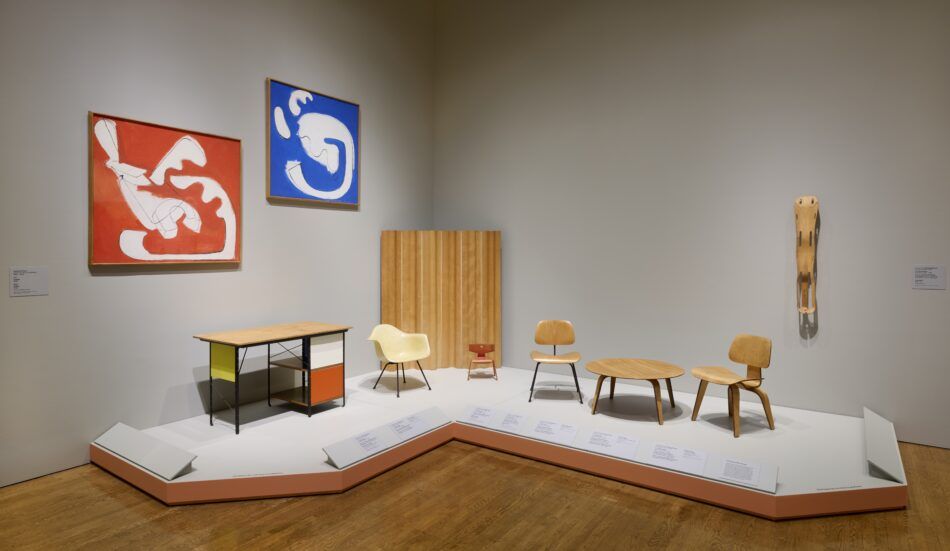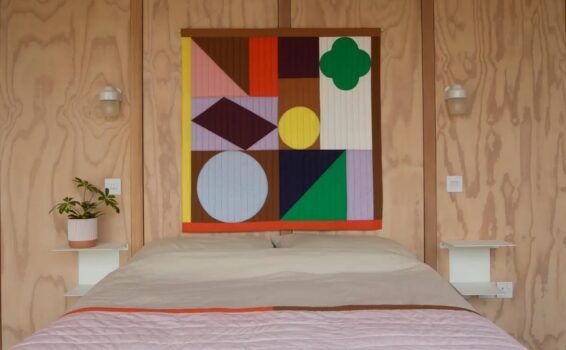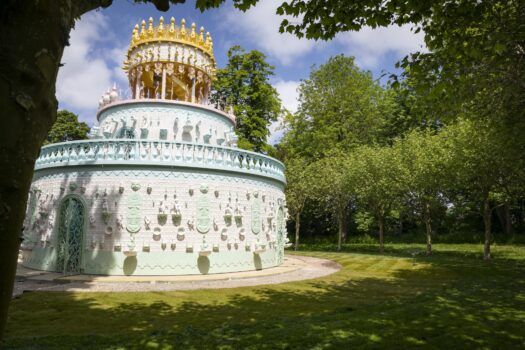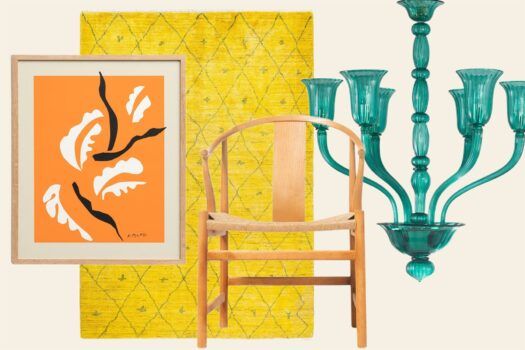
With World War II raging for the first half of the decade, the 1940s were a time of immense strife. Still, even with the constraints of the period, artists and designers continued to experiment, generating ideas and creating objects and ideas that remain potent today. Such is the thesis of “Boom: Art and Design in the 1940s,” an exhibition on view at Philadelphia Museum of Art through September 1.
The show spans visual art, fashion design, furniture and technology, including pieces by Russel Wright, the Eameses, Jackson Pollock and Christian Dior. Some of the most compelling works on display, though, are from George Nakashima and Isamu Noguchi. After being forced to move to an internment camp in Idaho in the spring of 1942, Nakashima met master carpenter Gentaro Hikogawa. The experience left Nakashima with a deeper understanding of traditional Japanese carpentry. Grass-Seated chair, made in 1946 and on view in the exhibition, reflects the confluence of Japanese craft and American design.

Meanwhile, as an East Coaster, Noguchi wasn’t initially required to go to an internment camp, but he volunteered himself to work at one located in Arizona. His experience in the harsh desert conditions is reflected in numerous pieces, including This Tortured Earth, made soon after his return to New York. Today, these works offer a nuanced glimpse of a time period often remembered as one note.








